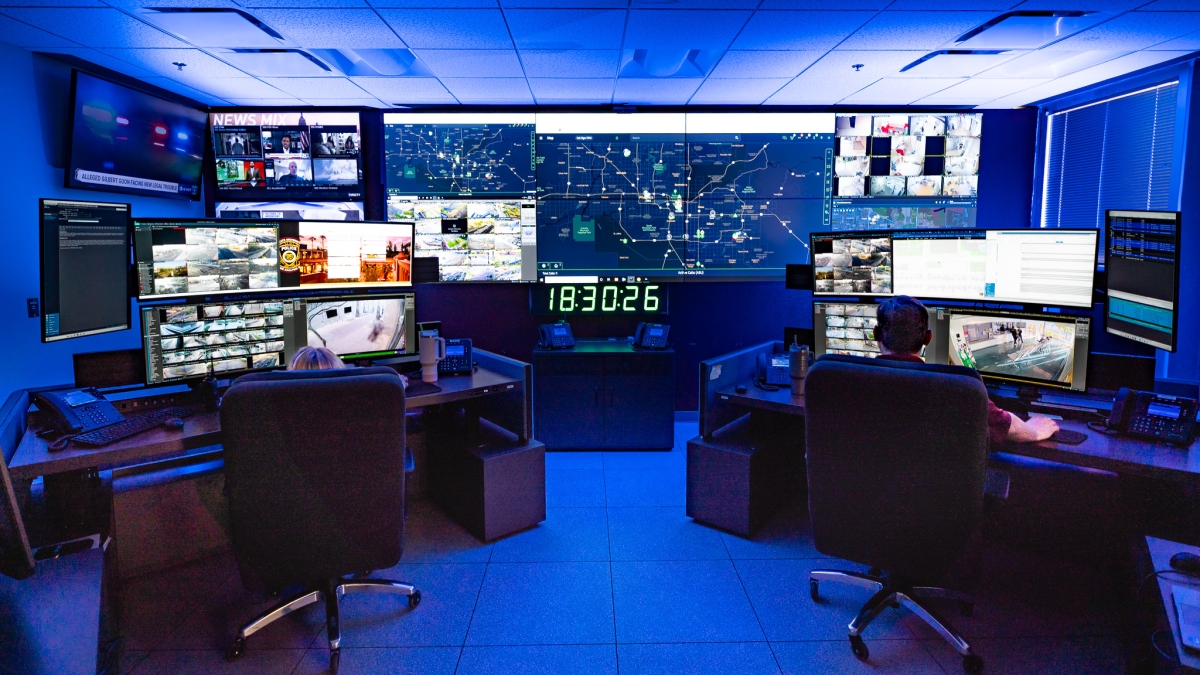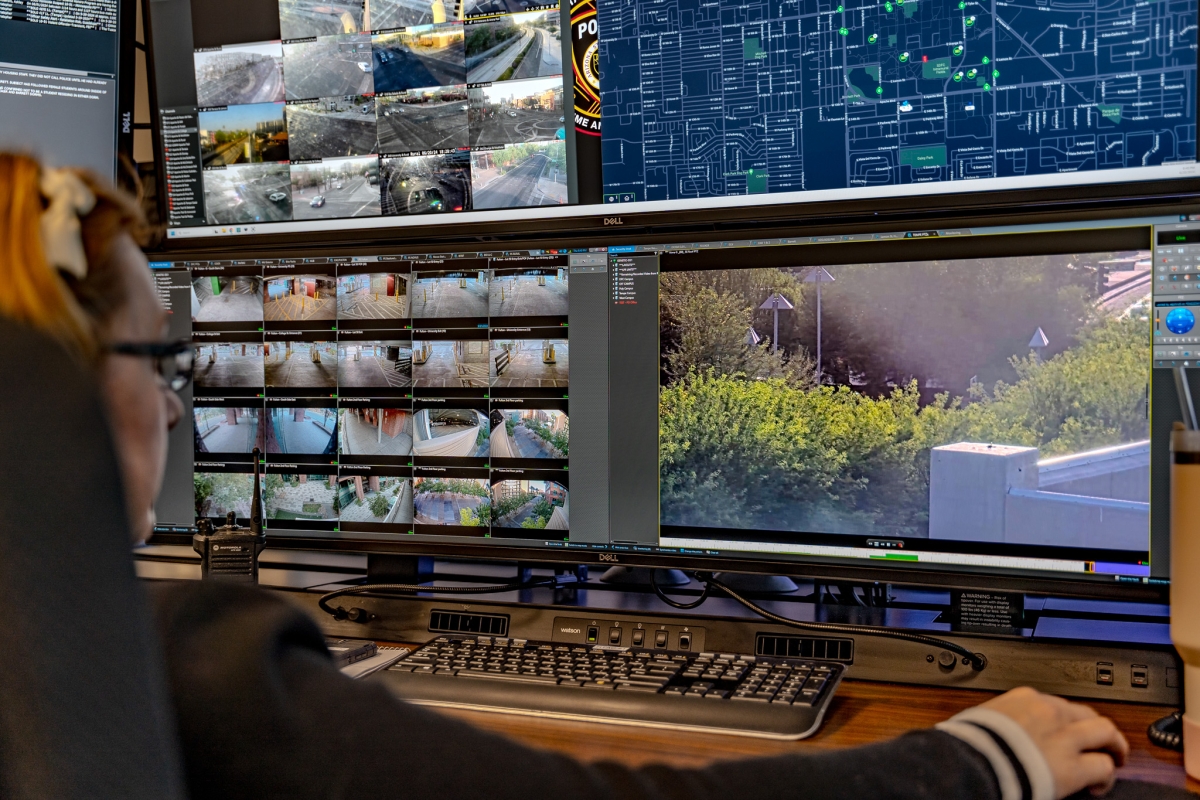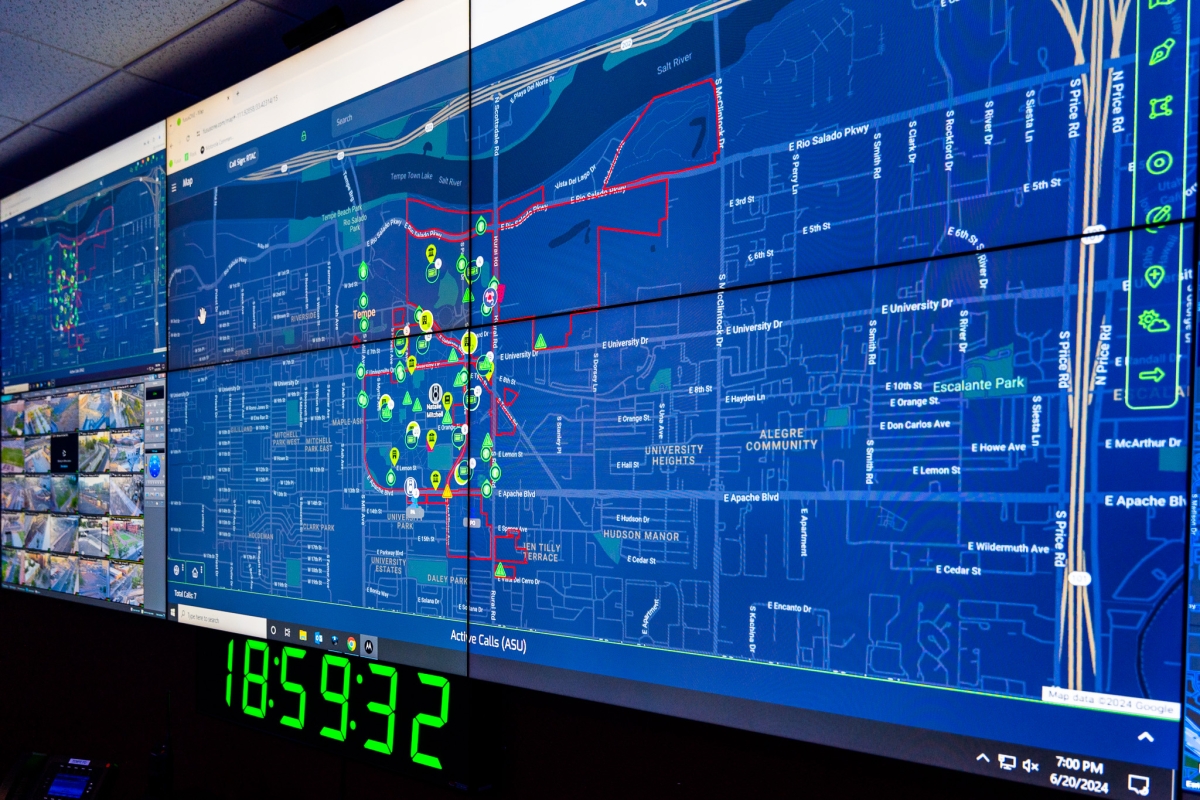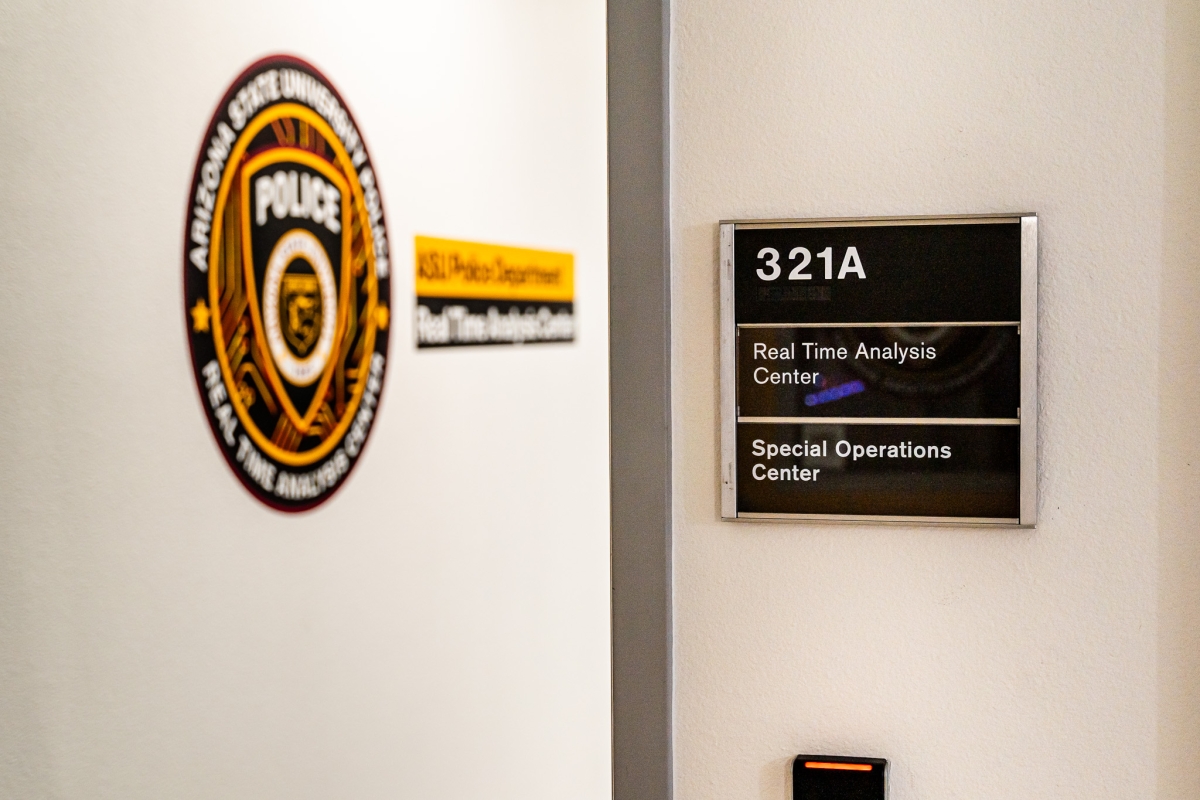Real Time Analysis Center enhances protection of community, resources

A look inside ASU Police's Real Time Analysis Center located in its headquarters on the Tempe campus. The center shares many of the same high-tech advanced capabilities that are widely considered the new standard among law enforcement agencies nationwide. Photo by Bryan Bouchard/ASU Police
It’s a nightmare scenario: A report of an active shooter at a building on a bustling university campus.
But instead of panic, the reaction is a swift, mediated assessment of real-time footage within and around the subject building, which reveals no signs of distress or concerning activity.
That information is immediately relayed to officers arriving on the scene, who are able to respond safely and efficiently, ultimately determining the call was a hoax, or “swatting” incident, without causing any undue alarm or concern to bystanders.
That incident really happened. And it was made possible by ASU Police’s Real Time Analysis Center (RTAC), which allows department employees to better manage and monitor the vast expanse of Arizona State University’s ever-growing campuses, centers and properties throughout Arizona, Los Angeles and Washington, D.C.
“The most exciting capability of the RTAC is its ability to provide instantaneous situational awareness,” said 26-year ASU Police veteran and Patrol Division Commander Dan Macias. “The system allows us to transform reactive policing into proactive crime prevention and resolution.”
And after a full year of operation, the RTAC continues to prove its worth.
According to Chris Hopkins, ASU Police’s Real Time Analysis Center manager and intelligence analyst, the RTAC provides near-instant information sharing, quick identification and apprehension of suspects, crime prevention and increased public safety. It takes multiple state-of-the-art information systems from manufacturers such as Fusus (Axon), Genetec and Flock, and then combines them with open-source internet tools and secure law enforcement databases to create a single, integrated center that department analysts monitor to provide better support to officers on the ground.
“I like to think of us as a ‘virtual officer,'” Hopkins said. “(We) use advanced software to map and integrate various tools such as computer-aided dispatch, automated police officer location tracking, live body cameras, automatic license-plate-reading cameras and university-owned CCTV cameras, which provide analysts the opportunity to be virtually on-scene before a call can be dispatched to officers.”
Hopkins added that the department was able to integrate the university’s existing 3,000-plus cameras at its four Phoenix-area campuses and the school’s Los Angeles, Lake Havasu City and Washington, D.C., centers into the RTAC, which officers once used to investigate incidents after they occurred. Now officials use those resources in real time to direct officers to better serve the community and protect resources on campus.
Another advantage of the RTAC technology is its ability to mesh with systems outside of the university.
“We regularly access traffic and light-rail cameras in the areas surrounding our campuses in the cities of Tempe, Phoenix and Mesa — especially during events that bring large numbers of fans and visitors to campus, like football games and student move-in,” Hopkins said. “These cameras help identify safety issues and traffic trends that we can quickly mitigate using an officer to direct traffic or for the city’s traffic center to adjust traffic-light lengths to better move lines of vehicles and clear congestion.”
Operations like the RTAC are the new standard for law enforcement agencies across the country, with more than 125 cities in the U.S. now operating similar systems. So it’s no surprise that the nation’s most innovative university is the first in the country to utilize such a technologically advanced, stand-alone system.
Locally, Phoenix, Mesa, Scottsdale and Glendale police departments all employ real-time crime centers, which are akin to ASU’s RTAC, with each tailored to the specific needs of the police department that fields it.
“We mindfully built the RTAC to more efficiently and effectively carry out our mission of fostering a safe and secure environment,” said acting Chief of ASU Police John Thompson. “The RTAC and its technologies balance our need for increased patrol capability in a growing university setting without significantly increasing our uniformed presence, which achieves a component of ASU's LIFT (Listen Invest Facilitate Teach) Initiative by contributing to creating a campus police force that better meets the needs of the community it serves.”
When there are no active calls, Thompson added, RTAC professionals can instead focus on proactive crime prevention, such as monitoring areas that generate higher crime statistics, like bike racks from which bikes and electric scooters are stolen.
“We’ve had numerous successful outcomes since RTAC’s launch a year ago,” Thompson said, “and I attribute these successes to the dedication and diligence of our collective PD team, IT professionals and the resources afforded us by university leadership, all of to whom I am deeply grateful.”
More Sun Devil community

A champion's gift: Donation from former Sun Devil helps renovate softball stadium
Jackie Vasquez-Lapan can hear the words today as clearly as she did 17 years ago.In 2008, Vasquez-Lapan was an outfielder on Arizona State University’s national championship-winning softball team,…

Student-led business organization celebrates community, Indigenous heritage
ASU has seen significant growth in Native American student enrollment in recent years. And yet, Native American students make up less than 2% of the student population.A member of the Navajo Nation,…

Remembering ASU physical chemist Andrew Chizmeshya
Andrew Chizmeshya, a computational chemist and materials scientist whose work spanned over three decades at Arizona State University, died on March 7 at the age of 63.A dedicated mentor and cherished…





